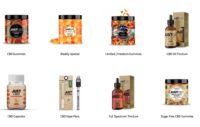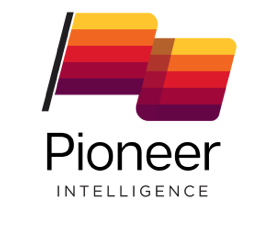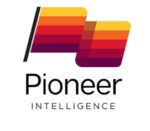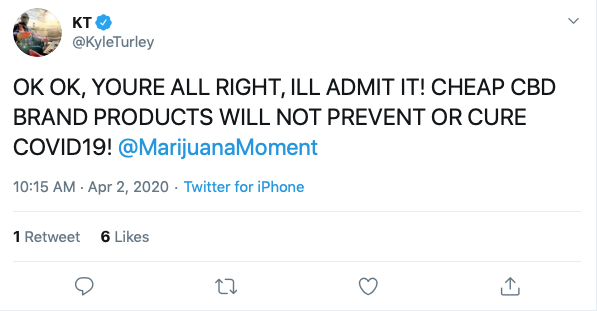Advertising your cannabis brand isn’t as easy as it should be—but then again, neither are most things about working in the modern cannabis industry. Here’s the good news: Today there are more avenues available for compliantly advertising your cannabis brand than ever before, particularly online.
So why don’t more cannabis brands run compliant digital ads? Generally speaking, it’s an issue of awareness. Since cannabis brands are currently disallowed from running their advertising campaigns through the modern digital advertising mainstays of Facebook, Instagram, and Google, most business owners believe that digital advertising as a whole is not allowed, and thus most cannabis companies are either underutilizing or completely overlooking their digital ad options.
In fact, the rules barring cannabis brands from advertising with Google and Facebook are specific to those platforms. While Facebook and Google—together known as “the Duopoly”—currently account for approximately half of digital advertising dollars spent in the U.S., the other half of the digital advertising pool—including sites like ESPN, HuffPost, Newsweek, Politico, Barstool Sports, and USA Today—is increasingly open to accepting ad buys from compliant digital cannabis and CBD advertisers. More publishers are opening their doors to cannabis ads every day, and many advertising professionals speculate that the COVID-19 pandemic may speed up the process, as publishers begin to look for new streams of ad revenue in order to weather the economic storm.
Where Can Cannabis Be Advertised?
Today, cannabis industry advertisers can easily run ads across hundreds of mainstream websites using programmatic advertising technology. This is true for both cannabis brands and CBD brands, though they use different programmatic platforms to do so: CBD brands (which we’ll address in more detail later) can use mainstream “demand-side platforms” (such as The Trade Desk) to run their ad campaigns, while cannabis brands can use new cannabis-specific platforms (such as Safe-Reach) created to address the unique compliance needs of the legal cannabis industry.
For those unfamiliar with the term, programmatic advertising refers to the automated buying and selling of online ad space using programmatic technology. In a nutshell, advertisers and their ad agencies use demand-side platforms (DSPs) to set the parameters of “bids” for certain ad impressions based on relevant attributes of the ad space and the viewer who will see it. Publishers put their ad space up for auction via supply-side platforms (SSPs), and ad exchanges play matchmaker to sell the ad impression to highest bidder in the time it takes the web page in question to load.

Cannabis-specific DSPs work with other cannabis industry leaders to develop sets of data relevant to cannabis advertisers; they then open these data sets within their platforms to help cannabis advertisers reach known cannabis consumers. These known consumers may be, for example, people who’ve downloaded apps like Leafly on their phones.
A key thing to note is that the cannabis ads themselves no longer need to be shown exclusively on these endemic cannabis sites and apps. In the past, digital cannabis advertisers were generally restricted to buying space on industry-specific sites like Leafly, High Times, and Weedmaps, which pushed prices up due to inventory limits and ran through ad budgets quickly. Ad networks like Mantis attempted to compile this inventory to make the buying process more scalable, but because cannabis has been (and remains) the fastest-growing industry in the United States since 2015, it’s no surprise that endemic cannabis ad inventory has been insufficient to meet demand.
Now, the data sets available through programmatic advertising technology allow ads to be shown to the same cannabis enthusiasts across any website, endemic or not. This makes digital advertising far more affordable for cannabis marketers, and allows for more advanced advertising techniques like building look-alike audiences, cross-device advertising, first-party data onboarding, and ad retargeting. These techniques can be used across all modern digital ad formats, including display, mobile, native, video and digital audio.
Still, even those marketers who are already aware that they can advertise digitally outside of Facebook, Google and endemic cannabis sites may struggle with knowing what they can say and show in their digital ads, particularly if they intend to run those ads in multiple locations or across multiple channels. The broadly applicable rules for running compliant digital cannabis ads are what we’ll discuss now.
Rules for Cannabis Ad Compliance
Thanks to cannabis’s continued federal classification as a Schedule I drug, current digital advertising regulations are governed by state cannabis laws, so they vary depending on where your business operates. This can become particularly confusing if you want to run digital advertisements visible to customers across multiple states (which some states allow—for those who don’t, cannabis ad tech will let you keep your ads within state or local borders too).

Luckily, most cannabis bills are crafted to resemble those that have been passed successfully before them, which means that state laws can be boiled down to a handful of broadly applicable guidelines no matter where you intend to show your ads. The current best practices for advertising cannabis are as follow:
- No claims of health or medical benefits
- No elements that could appeal to children (cartoon characters, etc.)
- No false or misleading statements, including those made about competitors’ products
- No testimonials or endorsements (e.g. recommendations from doctors)
- No depiction of product consumption
- No pricing information, potency statements, or promotional offers
- Ads for infused products must state “For Adult Use Only”
Using these guidelines, cannabis marketers can more easily create ads to be approved for use in a variety of settings. A few states have their own additional rules: In Florida, a state approval process for ad creative also applies. In Alaska, Arkansas, California, Maryland, Massachusetts, Nevada, Ohio, Oregon and Washington, additional state-specific copy is required in the ad creative.
Note that it’s always important to double-check your state’s most recent requirements, as local rules may change over time. If you’re working with an advertising agency that specializes in the cannabis industry, they can help you with this process; cannabis-specific programmatic platforms like Safe-Reach will also check your ad creative against local requirements as part of their approval process.
Why Advertise Cannabis Digitally?
Prior to the advent of modern, cannabis-specific digital advertising technology, cannabis marketers were light years behind their mainstream industry counterparts in terms of the advertising channels they leveraged to get their message out. Traditional advertising tactics like billboards and print ad buys were popular among cannabis businesses early on due to the lack of digital ad publishers willing to work with them.
The problem with these traditional tactics is one of targeting, measurement, and reporting: It’s impossible to know who has seen your ads, how many of those viewers went to your website or dispensary after seeing them, and what your return on ad spend (ROAS) was. The fact that you can neither know nor control who will see your ad in a print newspaper or on a billboard is why most states have treaded cautiously with their advertising restrictions to avoid ads being seen by minors. In Washington state, for instance, no advertisement is allowed “within one thousand feet of the perimeter of a school grounds, playground, recreation center or facility, child care center, public park, library, or a game arcade admission to which it is not restricted to persons aged twenty-one years or older; on or in a public transit vehicle or public transit shelter; or on or in a publicly owned or operated property.”

With programmatic advertising, digital identity data allows advertisers to show their ads exclusively to an appropriate audience—for instance, adults ages 21 and over who live within state borders. Digital advertising also addresses the issues of measurement and reporting, which is why mainstream brands have already shifted en masse to choosing digital over physical ads: You can learn, down to the cent, the return on your digital ad investment, which makes the choice of continuing to advertise an easy one as long as ROAS remains positive. As of 2019, digital ad spending surpassed traditional (TV, radio, print, etc.) for the first time in history, and in 2020, eMarketer estimates that $151 billion will be spent on digital marketing versus $107 billion on traditional. By 2021, 70 percent of all digital ads—and 88 percent of display ads—will be bought and sold using programmatic technology.
As the fastest-growing industry in the United States, cannabis should also be one of the fastest-growing segments in digital advertising, but so far cannabis advertising efforts have been far off pace with the industry’s progress as a whole. However, that is beginning to change as savvy cannabis brands begin to understand and leverage their digital marketing options.
What About CBD Advertising?
The 2018 Farm Bill legalized hemp-derived CBD products in the United States, but did not offer guidance on selling, marketing or advertising them. Most CBD products are thus sold and marketed in a legal gray area, which is only made more confusing by Facebook’s and Google’s policies of rejecting these as “illegal drug” ads (a policy both platforms enforce irregularly). Although CBD brands should still try for approval, and some ads (especially those for hemp-derived CBD topicals) may be approved, CBD advertisers cannot rely on Facebook and Google for ongoing traffic, and ads may be taken down after initial approval regardless of legality.
That said, CBD business owners already have an even more extensive range of digital advertising options available outside of search and social than cannabis brands do. Some websites that do not yet accept cannabis ads will accept CBD ads, and mainstream ad tech platforms like The Trade Desk allow CBD ad buys as long as ad creative meets their internal guidelines for approval. Thus, the de-facto rules and regulations governing CBD advertising today are made by the platforms and publishers running their advertisements. To ensure ad approval on programmatic platforms like The Trade Desk, CBD brands should follow the same guidelines listed for cannabis brands above.
To sum up the current state of digital advertising compliance in the cannabis industry, cannabis and CBD brands should know that there are far more digital advertising options out there than most people realize, and that creating compliant ads is relatively straightforward as detailed above. That said, brands considering an investment in digital advertising should also keep in mind that the current window of opportunity for getting a head start on the competition is already closing day by day as brands begin to realize all the ways they can run compliant cannabis digital ads.
Suggested Readings
Programmatic Advertising: A Close Look at Cannabis (IAB)
White Paper: Digital Ads for Cannabis & CBD (PrograMetrix)























